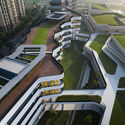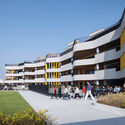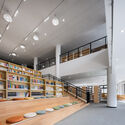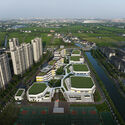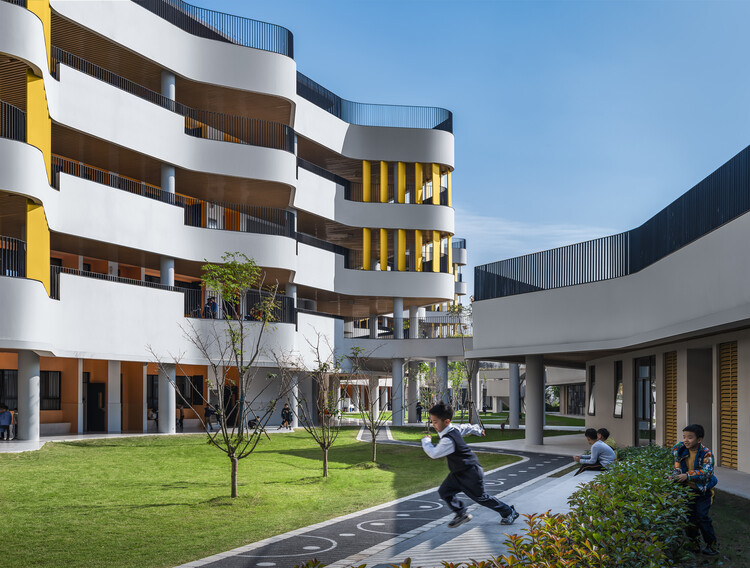

Not factories – Public schools in Shanghai are conservative in their pedagogy and factory-like in their architecture. The new Chonggu Experimental School, however, provides the potential for a shift in pedagogy from the traditional disciplinary model to less formal, inquiry-based approaches. It also presents a paradigm shift in formal expression – a design shaped for joy, play, and dreaming.
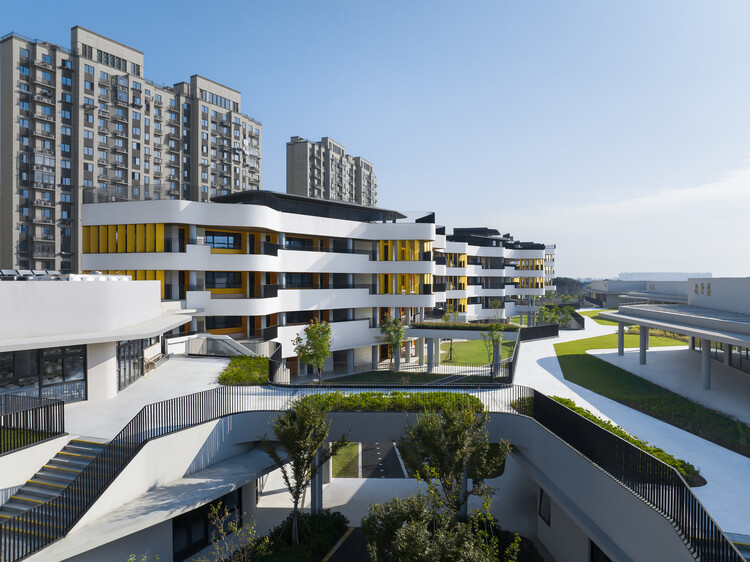
Daydreaming – Inspired by the site’s canal and by the lyrical drawings of the late architect Zhang Zai Yuan, the formal language of the school is dream-like, another world, a world of innovation, creativity, and difference. The familiar school typology of the slab with an external corridor is increasingly distorted toward the school’s interior courtyard. Observed at first by a crank in the slab, then by a bent window, then by parabolic bay windows, and soon by lines of balconies vibrating with movement. It was as if reality had been shaken — like a rope held at one end, with waves of different sizes hurtling along its length, suddenly stopping in a frozen moment.
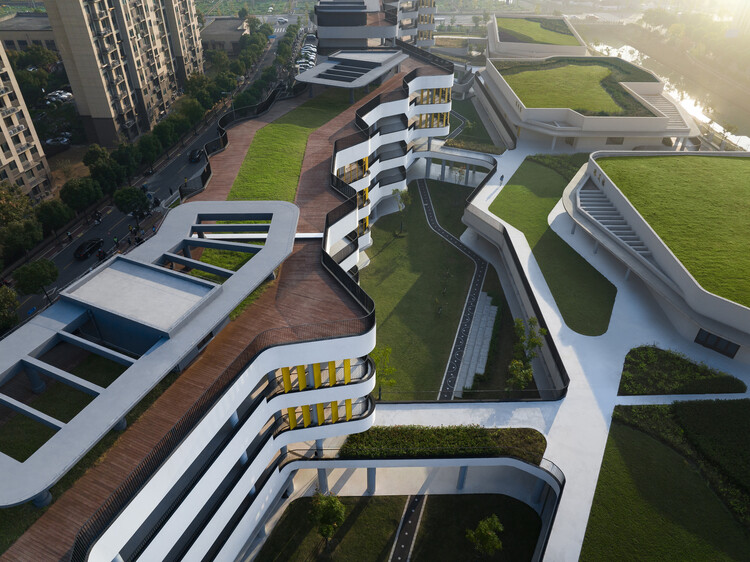
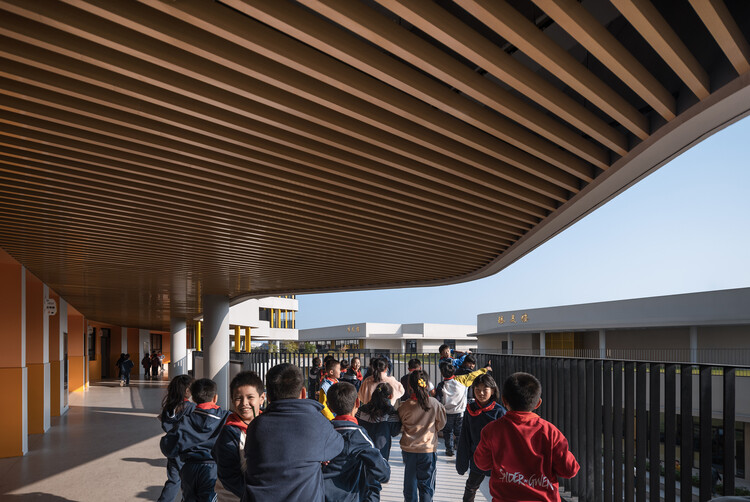
Not spoon-fed but student-driven – Academics remain split on the effectiveness of formal vs informal pedagogic models. China remains at one extreme, the teacher as the font of all knowledge, and students rote learning correct answers. Schools such as those applying Reggio Emilia’s philosophy are on the other, where students and teachers have significant degrees of autonomy over their curriculum. Traditional classrooms are well known to us. They are usually boxy and have an array of desks facing the front. Informal teaching spaces, on the other hand, are larger rhizomatic, flowing field conditions where teams of teachers oversee students working independently or in small groups. The student-teacher ratio is high in China, with large classes of 40-50 students the norm. With this ratio, it is difficult to manage any but the traditional pedagogic model and its requisite multitude of classrooms. Team-teaching, inquiry-driven approaches require a greater number of teachers and corresponding higher wage bills.


At the current declining birth rate, China anticipates a dramatic drop in the number of school students. This will free space, and teachers, in existing schools and create opportunities for experimentation with pedagogies. New school architecture needs the flexibility to adapt to the space requirements and enable these progressive initiatives.

If not less, then at least more engaging – Chinese students are extremely highly educated; this is due to the arduous hours of study as much as to the style of teaching. Competition for good university places begins in kindergarten. The issue of children being heavily burdened by the study is acknowledged by authorities but has proven impossible to alleviate. A more student-centered pedagogic model could be one solution to creating a more varied, fulfilling, and enjoyable curriculum without reducing the required learning intensity. It might also prepare students to be nimbler for an AI future.


Future-proofing – Chonggu Experimental School can be transformed from a traditional teaching model to one that suits student-centered learning in a number of ways. Firstly, the walls between each pair or group of three classrooms can be replaced by operable walls enabled by the column structure. This enables team teaching. Secondly, the classroom corridors, running the length of the slab building, can become enclosed with glazing to create a generous internal street suitable for programs such as exhibitions. Thirdly, the rooms at the knuckles in the slab building are designed to be used as student study and project space. Finally, the large meandering corridor network within the two-story extra-curricular buildings is wide and designed with bulges to accommodate all manner of study and nooks and pods. Peer-to-peer learning, digital-based learning, project-based learning, student inquiry, and STEAM learning can be supported in these informal spaces.
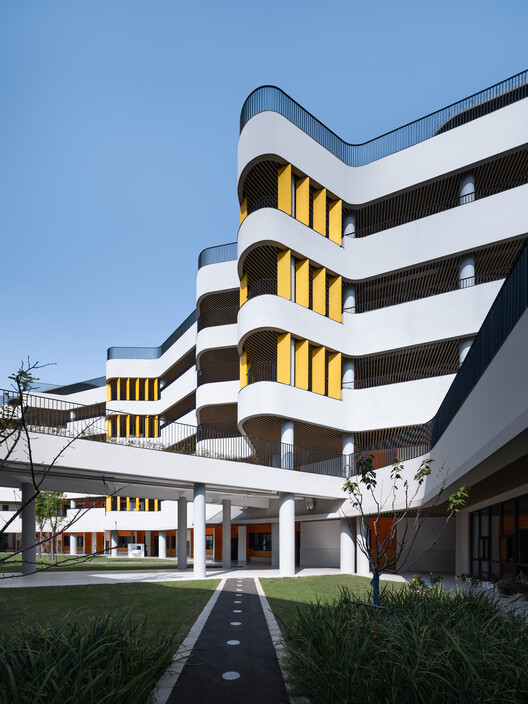
Look-out – The site is adjacent to one of Qinpu’s hundreds of canals. The gymnasium, library, auditorium, music school, art school, and various special functions are located here, and there are windows, verandas, and terraces overlooking the canal. In the future, the existing public canal fence should be removed, and a landscape should be developed to integrate the school with the canal. The taller classroom building’s balconies overlook the green roofs of the specialized buildings and the canal.
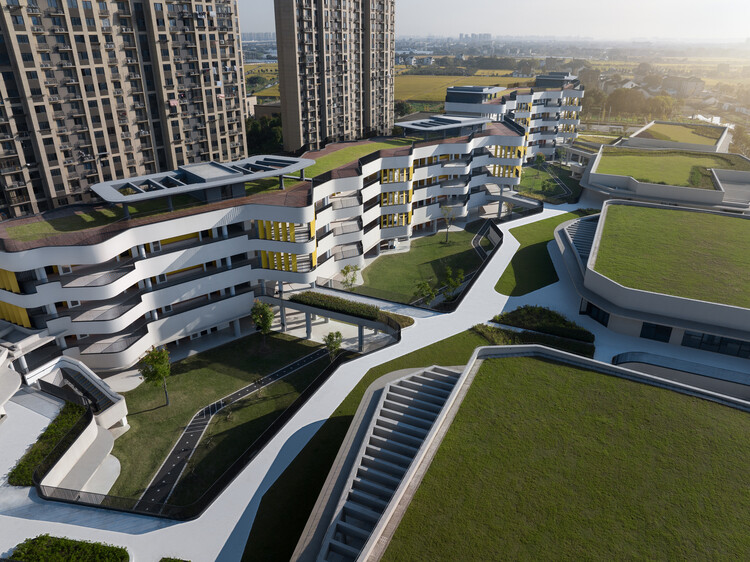
Bleachers and pitches – The sports hall and canteen are located adjacent to the sports grounds. Grandstand seating connects the rooftop and second-floor level with the sports fields and provides a place for students to hang out. The canteen is located to enable further view sharing from the adjacent taller teaching wing. Along with its terrace, the canteen hall has broad views over the sports fields, activities, and beyond.

Pre-fab – Despite the curved edges of the floor slabs, the buildings adopt a standard structural grid to facilitate the assembly of prefabricated components. The external walls, columns, floor slabs, and staircases are rationalized to enable a minimum 40% prefabrication rate for both the overall construction and for each individual building. Prefabrication reduces cost, time, wastage, and urban disruption. It also enables a higher quality of construction and finish.

Summer smart – To counter Qingpu’s notoriously hot summers, lower carbon consumption, and improve comfort levels, passive solar control is employed. Eaves and fins prevent the majority of the summer sun from entering the buildings. The majority of the site and rooftops are vegetated. This supports sustainable urban drainage systems, sponge city objectives, bio-diversity, and the reduction of the urban heat island phenomenon.
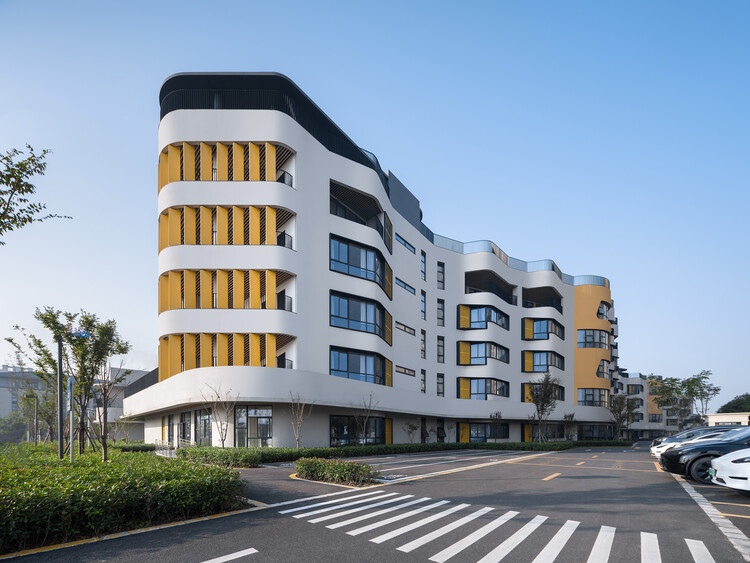
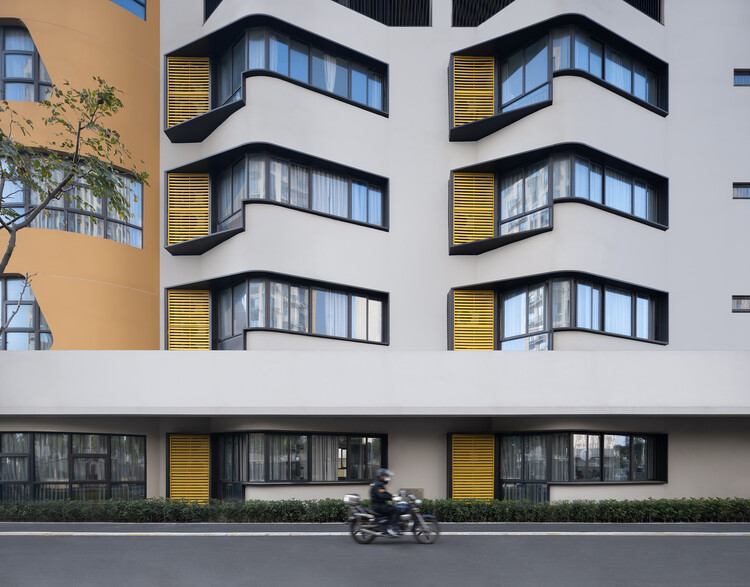
Potential filled – The increasingly popular team-teaching pedagogies profess to find the potential of all students, particularly those who are unmotivated in the traditional system. Chonggu Experimental School likewise provides the opportunity for all educators to fulfill their own potential and engage in other ways of teaching. The architecture supports a traditional pedagogy, but importantly, it will equally encourage and support alternative methods should an enlightened and adventurous head teacher arrive at the school.






